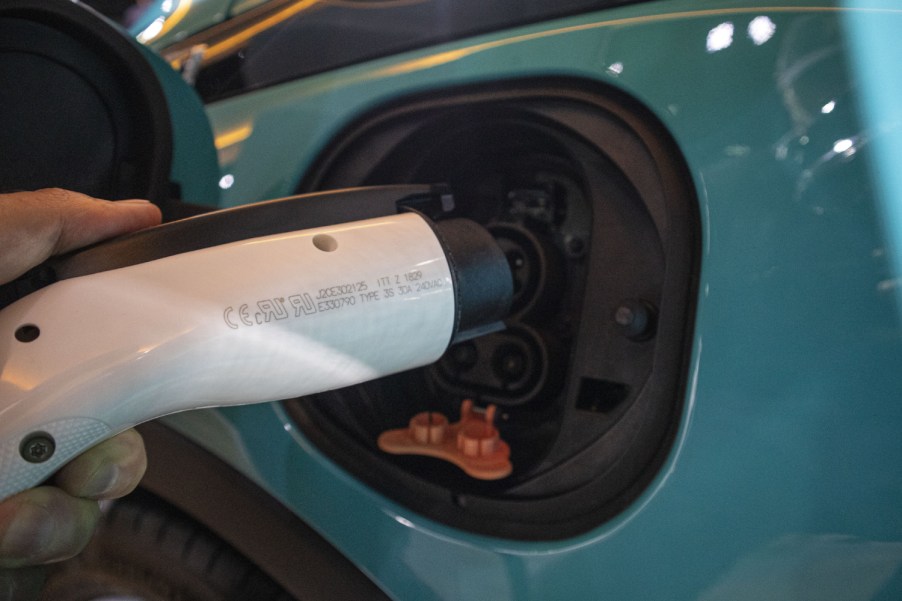
EV, BEH, HEV, PHEV: Which Electric Vehicles Do I Want?
Perusing through the posts on MotorBiscuit and other sites you’ll see references to EVs, BEHs, HEVs, PHEVs, Hybrids, and more. The abbreviations can sometimes get confusing. So, are you looking for a little electrification or hydrogen boost? Here’s a brief primer on what each of these electric systems is.
There are three main types of electric vehicles or EVs
There are three main types of electric vehicles or EVs. The BEV is just a different abbreviation for a battery-powered electric vehicle. A hybrid is also called an HEV, and a plug-in hybrid is abbreviated as PHEV. Now, we’ll break these main categories down into more arcane subsets.

A hybrid vehicle incorporates some kind of internal combustion engine along with battery power. A BEV solely uses battery power. For that reason, the BEV will typically have a longer range than a hybrid or HEV. Also, HEVs charge their batteries from regenerative braking. That means it stores the kinetic energy it takes to stop the vehicle. Though incorporating a gas engine they get much better gas mileage than an ICE vehicle without battery assistance.
Micro- or mild-hybrid uses both a battery and electric motor for power
A micro- or mild-hybrid uses both a battery and electric motor for power. They can’t run on electric power alone. But fuel economy is improved by shutting off the gas engine during stops. That is why you might have noticed a starter noise in a car next to you at a stop. When the light turns green you hear the engine starter before the vehicle moves forward.

A plug-in hybrid or PHEV has both a gas engine and battery power. The charged battery powers the electric motor conserving gas. PHEVs have the ability to go 35-40 miles on electric power exclusively. A standard hybrid vehicle can only run a couple of miles on electric power alone.
Extended-range electric vehicles are also called EREVs
Extended-range electric vehicles or EREVs are also called series plug-in hybrids. For these systems, the electric motor is what propels the vehicle. The gas engine generates electricity to charge the batteries. When the battery gets low the electricity stored by the engine then powers the vehicle. Parallel or blended PHEVs use both the ICE engines and electric motors to push along the vehicle.



